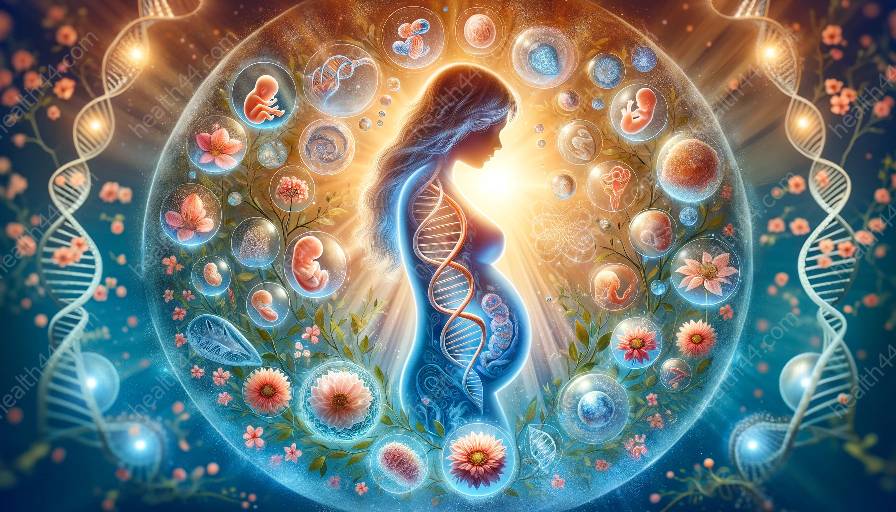The development of a fetus is a complex and intricate process that relies on the efficient exchange of nutrients and oxygen. Central to this process is the vital role of the umbilical cord in fetal circulation and the transfer of essential substances from the mother to the developing fetus.
Fetal Development and Circulation
During fetal development, the umbilical cord plays a crucial role in supporting the circulation of blood between the fetus and the placenta. The umbilical cord is the connecting link between the developing fetus and the placenta, serving as the lifeline that facilitates the exchange of oxygen, nutrients, and waste products.
The umbilical cord consists of two arteries and one vein. The umbilical arteries carry deoxygenated blood and waste products away from the fetus to the placenta, while the umbilical vein carries oxygenated blood and essential nutrients from the placenta to the fetus. This circulation is essential for the fetus's growth and development as it ensures a constant supply of oxygen and nutrients.
Function of the Umbilical Cord
The umbilical cord acts as a conduit for the flow of vital substances between the mother and the fetus. Oxygenated blood from the mother's circulation is transported to the placenta, where it enters the fetal circulation through the umbilical vein. This oxygenated blood is then distributed to the fetus, ensuring proper oxygenation of vital organs and tissues.
In addition to carrying oxygen, the umbilical cord also serves as a pathway for the transfer of essential nutrients. Nutrients such as glucose, amino acids, and vitamins are transported from the maternal circulation to the fetus through the umbilical vein, providing the necessary building blocks for the fetus's growth and development.
Furthermore, the umbilical cord also plays a critical role in the removal of waste products from the fetal circulation. Deoxygenated blood and waste products are carried away from the fetus through the umbilical arteries, allowing for the elimination of metabolic by-products and maintaining a healthy environment within the fetal circulation.
Impact on Fetal Development
The efficient exchange of oxygen and nutrients facilitated by the umbilical cord is essential for supporting optimal fetal development. Adequate oxygenation and nutrient supply are fundamental for the growth and maturation of various organ systems, including the brain, heart, and lungs.
Proper circulation through the umbilical cord ensures that the fetus receives the necessary components for cellular and tissue growth, contributing to the development of a healthy and fully formed baby.
Furthermore, the umbilical cord also serves as a protective barrier, shielding the fetus from potential harm and providing a cushion against external pressure or trauma. This protective function is crucial for safeguarding the delicate fetal circulation and ensuring the unimpeded transfer of essential substances.
Conclusion
The umbilical cord plays a pivotal role in fetal circulation and nutrient exchange, enabling the transfer of oxygen, nutrients, and waste products between the mother and the developing fetus. Its functions are essential for supporting fetal development and ensuring the supply of essential components for growth and maturation.
Understanding the critical role of the umbilical cord in facilitating fetal circulation and nutrient exchange provides valuable insights into the intricate processes that shape the development of a healthy baby, underscoring the remarkable connection between the mother and her growing offspring.


